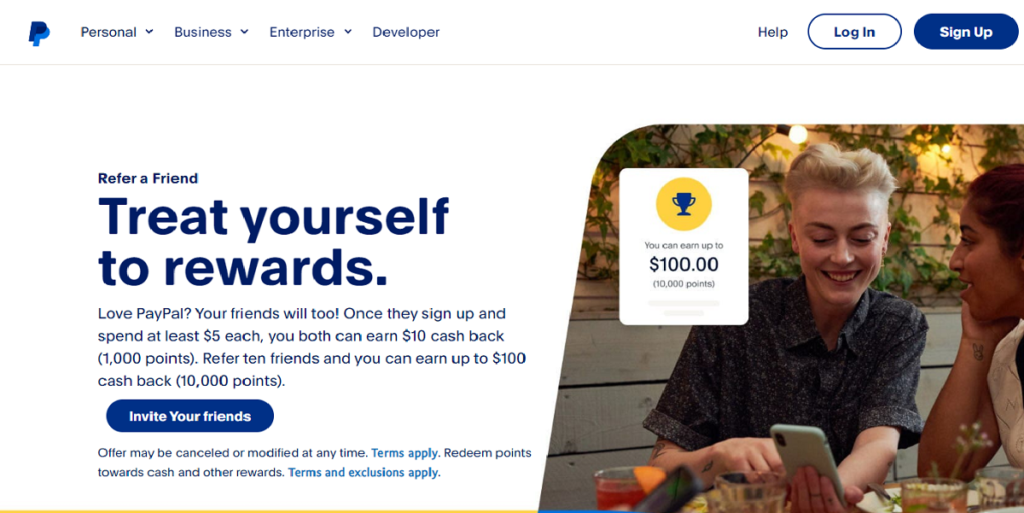Growth marketing centers impact over vanity. Its science-backed methods test, learn and optimize constantly based on performance data to convert high-value visitors into loyal customers. As new techniques emerge, forward thinkers gain the advantage.
Coming years especially demand agility, as economic and technological shifts sweep across domains. Those embracing innovative yet proven strategies standing the test of time will stay ahead of the curve.
Growth marketing focuses on rapidly yet sustainably scaling a company by utilizing data, creativity, and innovative strategies across channels.
In today’s highly competitive world, growth is critical but difficult to achieve. Studies show only 1 in 10 startups succeed long-term. 82% of startups fail due to lack of market need or running out of funds. (Read our blog on how to setup marketing budget)
This makes implementing effective growth marketing strategies essential for any business looking to expand its reach, acquire more customers, and boost revenues.
Before knowing the all-powerful growth marketing strategies, let us first know a thing or two about growth marketing.
What is Growth Marketing?
Growth marketing takes a strategic, customer-focused approach. Rather than chasing trends, it aims to deepen existing connections through continuous testing and learning. Success depends on satisfying loyal patrons over the long run, not just attracting fleeting attention. Relationships are nurtured through relevance, reliability, and mutual benefit between the brand and the user.
Growth Marketing strategies center on addressing proven interests through targeted, tailored experiences – not broad messaging. Small experiments provide insights into optimizing the journey.
Growth favours worthwhile strides over quick sprints by leveraging science and supplied service equally. Its principles, when diligently put into practice, undoubtedly move enterprises closer to their full potential over months and years.
20 Powerful Growth Marketing Strategies
1. Product-led Growth
Rather than cast wide nets hoping customers bite, this targeted approach nurtures highly motivated audiences through iterative product improvement. Qualified leads are attracted via educational, value-dense content demonstrating mastery within contexts they already frequent online.
By prioritizing the customer experience every step of product evolution, a valuable free tool or self-serve option hooks users reliant on its usefulness. They become personally invested due to reliance, forming a connection driving voluntary promotion and advocacy and fueling organic growth through peer networks.
As trust deepens, premium offerings may emerge to serve those craving more. But transactions remain optional – the priority stays on delivering exemplary, helpful service first and foremost. Product-led growth cares foremost for elevating others, letting commercial aspects follow suit as a byproduct of doing so with radical generosity and care.
Some examples of product-led growth marketing include:
- Generous free trials
- In-product walkthroughs
- Education and help content
- Viral sharing capabilities
- User referrals
Companies like Dropbox, Slack, and Canva have successfully driven growth through product-led strategies. For example, Dropbox increased signups by encouraging referrals with free storage incentives. Companies using product-led growth see up to a 92% increase in user activation compared to traditional SaaS user onboarding flows. A McKinsey study found product usage was the primary driver of growth for more than 80% of SaaS companies.
2. Growth Hacking
Growth hacking emphasizes creative exploits gaining traction. It inspects user behaviors closely for points demanding reform, then engineers optimizations satisfying needs in unexpected ways that delight.
One standout example includes adding live conversations directly onto an e-comm website. Customers cherish interactions – online stores typically lack this. But reps answering queries speedily within the shopping biome converted browses instantly into buys by addressing uncertainties directly.
Another success involved a content site hacking its backlinks. They discovered keywords competitors owned and produced stellar guides tackling those topics profoundly while freely mentioning associated brands positively. The former rival sites naturally reciprocated in their own best interests, snowballing traffic organically.
In each case, identifying valuable gaps inspired solutions providing surplus value that went above and beyond. Growth hackers view hurdles not as constraints, but as changes to invoke through bold innovation in the service of others. Their techniques spread goodwill liberally.
Examples of growth hacking tactics include:
- Scraping public data to find target users
- Partnerships with influencers/bloggers
- Giveaways and contests
- Referral programs
- PR stunts that grab attention
One famous example is Airbnb’s Craigslist integration in 2009. By having listings automatically posted to Craigslist, Airbnb was able to scale from 50,000 to over 1 million listings within a few years.
3. Viral Loops
Viral loops offer compelling growth potential through strategic design. This methodology cultivates connections that inherently reinforce one another.
A classic example involves a review platform that notified buyers whenever helpful critiques emerged for products they viewed. This sparked interactions where, after one user posted feedback, others thanked and debated them – strengthening communal bonds. Such activity increased reviews overall, designed to naturally snowball.
One app encouraged people to share notes by showing them posts from active friends when they logged in. This helped users feel more connected to each other. They wanted to read and write helpful notes just to help their friends, not for rewards.
Real viral growth is based on everyone helping each other. People use the product because their friends find it useful, not just for getting prizes. When users help each other out of friendship, not obligation, it creates strong communities where people support each other. This spirit of sharing and cooperation lifts everyone up.
Examples of viral loop drivers:
- In-product notifications prompting sharing
- Rewards for referrals
- Contests and giveaways for user-generated content
- Network effects where value comes from other users
Spotify’s viral Facebook notifications helped drive its early growth. PayPal uses referral bonuses to incentivize viral invitations.

4. Influencer Marketing
Influencer marketing shows promise when approached thoughtfully. Rather than purchase promotions, seeking endorsements organically from those truly passionate progresses relationships authentically. You may offer influencers intimate tutorials experiencing your service fully, then gauge honest reactions openly shared with their circles via review.
If delight emerges naturally, both parties benefit – you through compelled advocacy, and they via quality tools aiding their dedicated audiences. But the focus lies on cultivating understanding through empathetic connection, not volumes or quick gains. Leave the door open, and foster an environment energizing influencers intrinsically to spread the good word without compensation required.
Gratitude also nurtures prolific growth, as does wisely identifying micro-influencers who tap into vital communities yet retain their personal touch. Work with those enthusiastic yet selective, whose insights improve both your service plus patrons’ experiences – relationships evolve helpfully on all fronts through candor and good faith.
Effective influencer programs include:
- Identifying influencers relevant to your niche
- Providing free products to create buzz
- Exclusive content and early access
- Affiliate commissions on sales-driven
- Sponsored posts and social content
Influencer marketing delivers an average earned media value of $6.50 for every $1 spent. 49% of consumers rely on influencer recommendations for purchase decisions.
5. Retention Marketing
Retention proves perhaps the wisest path lay foundations sustainably. Rather than chase ephemeral attention, nurturing devoted beneficiaries long-term yields the richest dividends.
By frequently engaging existing patrons through relational contact tailored sensitively to their unique purposes, needs evolve into deeper understanding between all involved. Custom support addressing particular patron challenges delicately builds unbreakable bonds of trust cementing loyalty indelibly.
Celebrating customer milestones publicly within communities reminds patrons to feel seen as esteemed individuals, not faceless units. Gratitude gently returned in proportional measure breeds advocates promoting your services affectionately from sincerity rather than external incentives alone. Growth blossoms naturally where kindness takes seed.
Retention tactics include:
- Remarketing and retargeting campaigns
- Customer loyalty programs
- Abandoned cart/browse recovery emails
- Surveys to gauge satisfaction
- Personalized recommendations
Existing customers spend 67% more compared to new customers. Reducing the customer churn rate by just 5% can increase profits from 25% to 95%.
6. Referral Marketing
Referral marketing taps the ample power of personal recommendations through strategic designs.
Rather than overt promotions, inviting bonded patrons to thoughtfully endorse your offerings to others appears noncompulsory yet yields fruitful results when structured artfully. Subtle mechanisms recognizing referrers’ efforts publicly within communities they foster stimulate ideas organically without directive commands or hollow compliments.
Elsewhere, tools allow existing customers to convey precisely why your efforts aid them to their circles, in their authentic voices and perspectives – activations intrinsically fueled by care for others. Surveys gathering how patrons first encountered your services also provide actionable insights sharpening identifiable Referral patterns and elevating all.
Growth sprouts wherever communities nourish cooperation without strings attached. Why not explore nuanced means patrons feel their close networks similarly benefit through your diligence yet retain the fullest autonomy freely conveying recommendations? Focusing always first and foremost on benefiting end users uplifts us all in kind.
Examples of referral tactics are:
- Offering discounts or rewards for both referrer and referee
- Contests and leaderboards for top referrers
- Social shares and invite options
- Referral codes and vanity URLs
- Automated referral emails
In its early days, PayPal saw 60% of new users come from member referrals. Dropbox also used referral bonuses as a growth lever. Referrals have a 37% higher retention rate once acquired compared to non-referred customers. Referred customers deliver 16% higher lifetime value on average.
7. Email Marketing as a Growth Marketing Strategy
While email proves an established growth medium, using it skillfully requires finesse.
Blanket broadcasts risk annoyance, so tailored messages directly solving patrons’ precise purposes will more likely catch their eyes in busy inboxes. Helpful educational content or timely status updates fostering communities also nurture loyalty when not overused.
Personable subject lines pique interest courteously through an inquisitive yet calm tone. Messages focusing solely on recipients’ interests and avoiding self-promotion uplift moods gracefully. Internal surveys and open communication help patrons shape future correspondences and nurture trust intrinsically.
Most importantly – why not explore nuanced means empowering patrons to disengage politely should timing not suit? Their well-being must come first, and relationships built on candor not obligation alone cultivate prosperous sympathy.
Emails that boost growth include:
- Behavioral trigger emails like cart abandonment
- Personalized product recommendations
- Customer win-back and reactivation campaigns
- Surveys to collect feedback
- Retention-focused newsletter content
Email generates $42 for every $1 spent according to recent studies. Segmented and personalized emails deliver 6x higher transaction rates.
8. Content Marketing as a Growth Marketing Strategy
As the abundance of information grows, content marketing has become a pivotal strategic channel. Recent reports indicate businesses using content saw 45% more leads and 50% more website visits than non-content marketers. However, it’s not enough to just publish posts – the quality, consistency, and sharing of insightful materials separate top contenders.
Begin with customer avatars to understand target demographics. Craft topics centered around their interests and pain points demonstrated through analytics. Strive for varied long and short-form formats including blogs, videos, social media updates, ebooks, and more. Distribute content where audiences naturally consume news. Link back to your site from third-party mentions to raise authority and organic traffic.
Closely track which content earns the most engagement and shares. Adapt recurring topics that prove hits while testing new themes. Optimize for search by including key phrases in titles and meta descriptions. Partnering with related companies for cross-promoting each other’s resources extends reach into new subscriber pools. Maintaining publish schedules keeps your brand top-of-mind as a go-to source of information in your industry.
Different formats that work for growth content include:
- Blog posts
- Infographics
- Video tutorials
- Podcasts
- Case studies
- Ebooks/guides
- Webinars
For example, software company Leadfeeder grew its organic traffic by 100% by shifting to an educational content marketing strategy. Consistent content marketing results in a 6x increase in overall marketing effectiveness. 73% of B2B marketers say their content marketing efforts significantly increased Web traffic.
9. SEO as a Growth Marketing Strategy
SEO can be an effective way to attract new customers through organic web searches. The key is focusing on providing useful content for your target audience.
Create pages that answer common questions people may search online. Use clear and descriptive titles/headings. Include relevant keywords but don’t overstuff. The goal is to help searchers find your site, not trick algorithms.
Quality intact, search engines reward content that helps users. Update existing pages regularly with new info. Link internally to related articles to keep visitors engaged on your site.
Monitor your rankings and get feedback from customers. Refine titles/content that underperform. Collaborate with other sites in your niche by linking to each other. A positive reputation online leads to more natural traffic over time.
SEO takes patience but nourishes loyal customers by meeting their needs through search. Prioritize their experience, and learn from data, and relationships will deepen. With consistent effort, your business can reach more people organically when they need you most.
Key SEO growth tactics:
- On-page optimization with keywords
- Link-building
- Local SEO optimization
- Site speed enhancements
- Updating content regularly
53.3% of all website traffic comes from organic search. 60% of marketers say that inbound (SEO, blog content, etc.) is their highest quality source of leads.
Also Read: SEO Freelancer vs. In-House SEO vs. SEO Agency
10. Paid Advertising as a Growth Marketing Strategy
Paid Advertising can help get your business in front of new potential customers when done right. The key is targeting the right audience and crafting compelling ads.
Analyze your current customers to understand who you appeal to most. Reach similar people on relevant websites and apps they already use. Test different ad types like social posts, search ads or display banners.
Keep ads brief, engaging, and focused on user benefits. Include calls to action prompting next steps like website visits. Continuously check performance – what drives the most clicks and sales? Refine poor-performing ads.
With testing and optimization, paid channels can introduce your business to qualified leads efficiently. Remain nimble by adjusting spend based on results. Most importantly, make the customer experience fulfilling so ads pay off in the long run.
Types of paid ads include
- Pay-per-click (PPC) text ads
- Display banner ads
- Social media ads
- Video ads
- Retargeting/remarketing ads
- App install ads
Retargeting ads have a 70% higher conversion rate compared to prospecting ads. Facebook advertising has a median return on ad spend (ROAS) of $2.50 for every $1 spent.
Join Markeeters
Hire an Expert Paid Search Marketer
Get More Qualified Leads & Sales
11. Reviews and Ratings
Reviews and ratings can be an important growth driver when handled properly.
Request feedback from happy customers to get your first reviews posted online. Ask for ratings on platforms like Google and Facebook.
Reply to any reviews – thank those who take the time. Respond gently to criticism by addressing issues respectfully. This builds trust.
Monitor for any fake or unfair reviews. Some competitors may try to damage their reputation. Get suspicious reviews removed according to site policies.
Consider rewarding loyal customers who review you publicly with special offers or discounts to motivate more feedback over time.
Always stay focused on providing excellent customer service and valuable products/services. Positive reviews will follow naturally as people feel satisfied and wish to help others. Keep interactions online polite and solution-focused.
With steady reviews and ratings from authorized buyers, potential customers gain more assurance in your business when researching options.
Tactics to generate more reviews:
- Emails and reminders to recent purchasers
- Follow-up thank you/support messages
- Coupons/discounts in exchange for reviews
- Review buttons on-site and in-products
- Repurposing positive reviews in marketing
Over 90% of consumers read online reviews before making purchasing decisions.
12. Partnerships
Partnerships can accelerate growth when mutually beneficial for all involved parties. Here are some ideas:
Look for complementary businesses in related industries that your customers may also use. Collaborate on promotions both audiences might value, like combo deals or tutorials.
Local organizations dedicated to your customer community could be partnership possibilities too. Support each other through endorsements and shared resources to reach more potential buyers together.
Larger companies whose core customers would appreciate what you offer may approve co-branded campaigns if well-aligned. Exposure benefits both brands through tried synergies.
Evaluate partnership fit very carefully. Reciprocity aids lasting wins. Be transparent, keep commitments, and focus on enhancing each partner’s customer experiences over short profits alone. These tactics grow trustworthy networks over time.
Partnership opportunities include:
- Relevant co-marketing partnerships
- Integration partnerships to improve product
- Channel partnerships for improved distribution
- Cross-promotions through guest content and giveaways

Dolce & Gabbana x Smeg collaboration is a great example of partnership marketing. The luxury fashion house and the home appliance manufacturer teamed up to create a line of colorful appliances that are sure to turn heads. The appliances are available in a variety of bright colors, including yellow, pink, blue, and green. They are also decorated with traditional Sicilian motifs, such as lemons and oranges.
13. Customer Research
Continual customer research helps adapt strategies based on real feedback. Some effective methods include:
Surveys – Ask patrons about satisfaction, and areas to improve after purchase through online polls. Gather additional opinions over time.
Focus groups – Discuss products and services with volunteer patrons in dedicated video calls. Valuable insights often surface through open discussion.
User testing – Observe customers using your website or app and note any issues or patterns. Make seamless upgrades benefiting the experience.
Public reviews – Monitor popular review hubs for subjective feedback. Patterns within responses guide refinements.
Analytics – Tools track usage behaviors like bounce rates helping optimize paths to conversion or engagement.
Research drives bright ideas that resonate. Listen closely to intended users and adapt tactics accordingly. Valued patrons then feel heard, fueling continued participation and benefiting all involved over the long run.
14. Lifetime-Value Optimisation
Lifetime value optimization aims to maximize customer retention and repeat spending over the long run. Focusing on lifetime value optimization can really help a business grow steadily.
Nurture long-term value through meaningful connections and utility. Ensure every patron experience and touchpoint encourages return through added perceived worth over time. Consider their evolving needs and tailor offerings suitably. With care, lifetime optimization elevates brand and customer well-being alike.
When businesses put effort into keeping customers happy and coming back, it leads to more total revenues over time. Statistics show customer retention can dramatically boost profits and long-term success.
LTV = Average Revenue Per Customer / Churn Rate
Ways to boost LTV:
- Reduce customer acquisition cost
- Increase retention rate
- Provide upsells/cross-sells
- Implement pricing tiers
- Develop loyalty programs
Companies like Amazon use LTV heavily to determine segments to target and acquisition spends. Existing customers spend almost 70% more on average than new customers.
It can cost 5 times more to acquire a new customer than to retain an existing one. Maximizing lifetime expenses per patron grows profits efficiently. Companies reporting above-average customer retention rates experience 90% higher valuation on average.
15. Funnel Optimization
Funnel optimization evaluates how users flow through a conversion funnel and improves pain points impacting conversions.
Funnel optimization is all about making your sales process more effective. It means examining each step people take as they learn about your business and become customers.
The goal is more conversions – turning visitors into buyers. You study what makes people stop engaging or leave the process. Then you test ways to address problems and keep them moving through each stage.
For example, you may find too many stop browsing after seeing your homepage. So you test simplifying the design or adding a popular eBook as an offer. Tracking results helps find the most helpful changes.
It’s also useful to show relevant content at each point. For instance, videos after someone signs up for your free trial. Funnel tests guide more leads smoothly towards becoming long-term, satisfied customers.
With continual testing and refinement, you can significantly boost conversions by making the journey quicker and easier for people.
Funnel optimization tactics:
- Identify funnel stages needing improvement
- Prioritize optimization hypotheses
- A/B test page layout changes
- Reduce form fields and friction
- Add exit intent popups
- Retarget abandoned carts

Funnel optimization improves lead conversion rates by up to 20%. Optimized checkouts can increase conversion rates by up to 35%.
16. Artificial Intelligence (AI) and Machine Learning (ML)
AI and machine learning can boost growth marketing strategies when implemented effectively. Here are a few ways it’s helping companies:
Advanced analytics – AI studies big customer data to discover hidden patterns. It helps optimize things like email content, ads, and product offerings tailored to specific user needs.
Personalized recommendations – Machine learning gets smarter over time at suggesting additional products, content, or services individual users may want based on their habits. This strengthens customer relationships.
Automated marketing – AI takes over repetitive tasks like AB testing ads or sending timely shipping notices. It frees up time for human marketers to focus on more complex projects.
As technologies evolve, leveraging AI where possible makes the customer experience seamless. Businesses that adopt these tools thoughtfully gain valuable insights to refine their growth approach and keep satisfying patrons.
17. Video Marketing
Video has taken the marketing world by storm, now accounting for over 80% of all internet traffic. Today’s busy consumers are much more likely to watch a video than read text-based content. Leveraging this trend, brands are seeing multiple times increases in leads generated through video content versus written blogs. However, creating quality videos requires both creative and technical skills. Here are some strategies to get started:
First, plan short-form videos (1-2 minutes) around timely topics or product demonstrations. Research relevant hashtags and questions your audience actively searches. Collaborate with influencers by providing video assets to freely share across channels. Optimize videos for social platforms through customized titles, captions, and call-to-actions.
Track engagement metrics like views, completion rates, and shares to assess what resonates most. Finally, repurpose top videos as ads or interactive quizzes to further boost leads. With patience and testing different formats, video can become a powerful growth engine for your business.
18. Mobile Marketing
As of 2023, over 5 billion people worldwide own smartphones, representing immense potential for mobile marketers. Studies show mobile has surpassed desktop in terms of digital advertising spending and website traffic. However, many businesses have only scratched the surface of in-app opportunities.
Strategically leveraging various mobile channels can take your marketing presence on the go. Interactive push notifications with timely, relevant content have led to 30% higher click rates versus standard alerts for some apps. Consider testing promotional notifications timed around events or product launches.
Optimizing your mobile website for easy navigation on small screens is also essential—half of mobile searches now result in no click at all due to poor site design. Testing different landing page formats can uncover high-converting templates.
Finally, mastering app store optimization techniques like customizing app titles and descriptions based on location can boost discoverability. Implementing a solid mobile strategy opens doors to all consumers, wherever business happens.
19. Leveraging User-Generated Content
Active communities that produce user-generated content (UGC) are invaluable marketing assets. Recent studies show brands promoted through UGC see responses up to 2 times more than normal posted content. Customers now trust peer recommendations over ads—83% rely on consumer opinions posted online.
Foster engagement by hosting campaigns that incentivize sharing brand experiences. For example, a travel company increased exposure by having visitors submit photos using branded hashtags from trips.
Carefully curate the most inspiring UGC across owned channels with user credit. Hold regular contests for customer-created videos, reviews, or images that resonate deepest with followers.
Nurture two-way conversations by prompting questions to generate discussions. Reply promptly and personally to establish trust. Over 50% of consumers say a company’s response determines whether they will purchase or remain loyal.
Thank members publicly for their contributions to motivate continued participation. Respect privacy by only sharing content with user permission. UGC can also provide key marketing insights. Analyze themes, comments, and locations mentioned to better understand motivations within target demographics.
Applying these learnings will strengthen products, services, and messages to maximize loyalty from within the community outward.
In 2020, Cadbury India launched the Go Madbury contest, which invited people to create their own unique flavor of Cadbury Dairy Milk. The contest was a huge success, and it helped Cadbury India to engage with customers and generate buzz for their brand. Video Courtesy: CadburyDairyMilkIn
20. Emerging Technologies
Augmented and virtual reality present interesting opportunities for customer connections and growth. AR/VR allows bringing products to life through interactive 3D simulations. Customers can see exactly how something looks and functions before buying. This reduces returns.
Interactive product demonstrations or tutorials hosted in virtual spaces give customers hands-on learning experiences from anywhere in the world with an internet connection.
Virtual brand exhibits at trade shows or conferences let more people globally be reached than ever before through remote participation. This expands audiences.
Immersive virtual tours of facilities provide transparency that builds trust between organizations and their partners/ audiences.
As technologies advance, testing AR and VR could reveal new ways to engage and delight customers while providing real value. Many early adopters are already seeing interest and results from these kinds of interactive brand experiences.
Implementing Growth Marketing Strategies
When implementing growth marketing strategies, here are 5 key considerations:
- Define goals and metrics like user activation, retention, referrals, engagement, and lifetime value that align with business objectives. Track analytics to inform priorities.
- Map each touchpoint of the user lifecycle from acquisition to onboarding, engagement, and retention. Look for pain points and optimization opportunities.
- Focus on agility and rapid experimentation. Test multiple ideas through minimum viable tests, measure impact, and then double down on winners.
- Involve teams in product, engineering, marketing, and analytics. Collaboration across disciplines ensures alignment.
- Use data and user feedback to iterate. A/B testing and optimization should be ongoing to maximize growth.
Final Thoughts
These growth marketing strategies can seem complex, but the most important things are simple.
Focus on customers first. Understand what they need and how you can truly help them. Provide value through helpful products and great service so they keep coming back.
Use data to improve. Pay attention to what works best and what doesn’t. Make small changes to help more people. Over time, your business will get better at serving customers.
Be flexible. New technologies and customer needs will change. Keep experimenting and learning from the results. Adjust your plans as needed to keep customers happy.
Work with others when it makes sense. Collaborate with similar brands or find ways to help each other’s customers together.
Most of all, treat everyone well – customers, partners, employees. With the right goals and teamwork, your marketing efforts will succeed through patience and care for others. Just stay determined while keeping things simple – the rewards will come!
FAQs on Growth Marketing Strategies
What are some key differences between growth marketing vs traditional marketing?
Traditional marketing focuses on long-term brand building while growth marketing uses rapid testing and optimization to boost customer acquisition and engagement. Growth marketing also heavily utilizes technology and data.
What types of businesses should use growth marketing strategies?
Growth marketing is best suited to startups looking for product-market fit and viral growth as well as small businesses that want to scale quickly. It can work for larger companies but requires a dedicated cross-functional team.
Which growth marketing strategies require the biggest budgets?
Paid advertising and influencer collaborations involve larger budgets to execute effectively, while strategies like viral loops and retention programs require more time than money.
How can companies maximize the impact of partnerships?
Clearly define objectives, create processes for alignment, leverage diverse partner capabilities, promote collaboratively, and track growth in key business metrics.
What are the 5 A’s of marketing strategy?
The “5 A’s” is a concept that breaks down effective marketing strategy into 5 clear steps.
Audience – The first step is understanding who your target customers are. Get to know things like their demographics, interests, pain points, etc.
Awareness – Then you need to figure out how to get your message in front of your audience. Things like social media posts, ads, partnerships.
Affinity – This means giving people a reason to care about your brand. Share valuable content they will want to engage with and pass along.
Action – Now it’s time to get potential customers to take a specific step, like signing up, or making a purchase. Calls to action are important here.
Advocacy – If things are going well, customers may become fans and recommend you to others organically. This is the goal of every business!
Join Markeeters
Hire an Expert Growth Marketer
Get More Traffic, Leads & Sale




